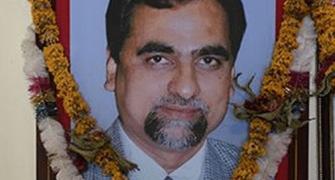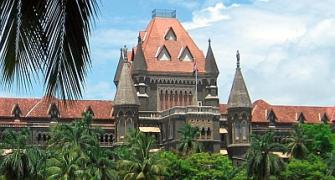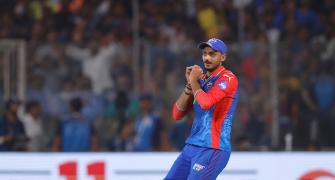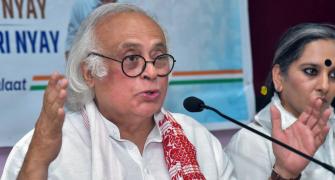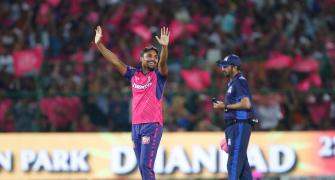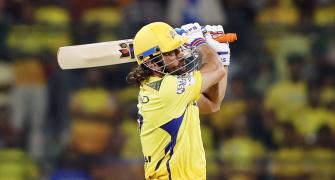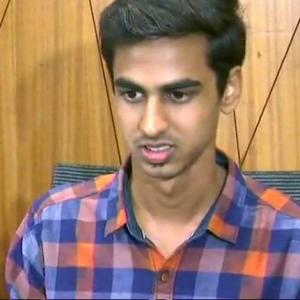The Bombay high court order quashing the gag order on reporting the court proceedings in the Sohrabuddin encounter case is a victory for every journalist,, and Indian, says Neeta Kolhatkar.
Illustration: Dominic Xavier/Rediff.com

Nine journalists along with the BrihanMumbai Union of Journalists filed a petition challenging Special CBI Judge S J Sharma's decision preventing the publication of the daily proceedings in the Sohrabuddin Sheikh, Kausar Bi and Tulsiram Prajapati fake encounter case.
It all began on November 29, 2017, when an application was filed by one of the accused in the case saying that following Judge B H Loya's death, all the accused, who included senior police officers, feared for their lives.
CBI Judge Sharma in his order barred journalists from publishing reports of the daily trial in print, as well as reporting on television and posting on social media.
The journalists went in appeal to the high court, and the gag order was quashed and set aside by Judge Revati Mohite Dere on January 24, 2018, in what can only be described as a big win for the Indian media.
It is perhaps for the first time that journalists from different media organisations with varying political ideologies came together to fight a common cause, thus setting an important precedent.
We also got immense support from the legal fraternity, and were represented by Aabad Ponda and Abhinav Chandrachud, and assisted by Varsha Bhogle and Shailendra Singh, all on a pro bono basis.
Many journalists who wanted to personally endorse the petition were not given permission by their superiors, while many supported us in other ways, including contributing money that they could have used elsewhere.
For the entire fraternity of journalists who cover the lower and high courts, this case held out a lot of hope.
The high court order thus is a victory not only for the media, but for the citizens of this Republic too. Because the original bar was not only on reporting the case proceedings, but also tweeting about it, or blogging about, or posting it on Facebook -- which could be done by anyone, not only journalists.
Violation of the order would have meant inviting contempt of court proceedings.
Given today's political atmosphere, the high court order gains even more significance. For those allegedly involved in the Sohrabuddin case are part of the Bharatiya Janata Party and high-ranking police officers.
On November 23, 2005, Sohrabuddin was travelling with his wife Kausarbi from Hyderabad to Ahmedabad. It was alleged by then Gujarat top cop D G Vanzara that the state anti-terror squad had information that he was coming to the state to kill a top Gujarat politician, then chief minister Narendra D Modi.
The alleged fake encounter to eliminate Sohrabuddin was plotted by the police in three states: Andhra Pradesh, Gujarat and Rajasthan.
A subsequent investigation discovered that Sheikh was killed in an extra-judicial execution and dismissed the allegation that he was a terrorist.
His wife Kauserbi, the investigation revealed, was killed by the Gujarat police subsequently on November 29, 2005, and his aide Prajapati was killed a year later.
The case against the killings was registered after a key witness, Sohrabuddin's brother Rababuddin, wrote a letter to the then Chief Justice of India, and remains a key witness in the case.
The Gujarat government was forced to admit in the apex court that the Sohrabuddin Sheikh encounter was staged.
In the last four years, 15 accused -- including BJP President Amit A Shah (then Gujarat's minister of state for home) and Vanzara -- have been discharged from the case. Recently, charges were framed against 22 accused.
The most recent development was the death of Special CBI Judge Brijgopal Harkishan Loya, who was hearing the Sohrabuddin case when he died of a heart attack in Nagpur on December 1, 2014.
An article in Caravan magazine detailed the 'mysterious circumstances' of Judge Loya's death.
In fact, one of the lawyers for an accused sought that the journalists' case be deferred, since the Supreme Court was already hearing matters relating to Judge Loya's death. However, the high court held that 'the present case is not remotely connected to the matter being held in the Supreme Court', and the judge pronounced her landmark order.
In her ruling Judge Revati Mohite Dere called the media a 'powerful watchdog'. The media is the fourth pillar of democracy and its role is to report on happenings in society. The role of the watchdog media is to empower readers with information, especially of the misuse of power, injustice and corruption.
The Sohrabuddin case is highly sensitive since those involved are of a certain rank and wield considerable power. It is therefore even more binding on the media to report on the proceedings in court.
It is through relentless reporting of fake encounters in Maharashtra that a public interest litigation was filed in the Bombay high court in the late 1990s, following which fake encounters were deemed illegal and guidelines were put in place.
In numerous other cases, too, the role of media has been held integral to shape public opinion.
While I speak of the rights of citizens and the press, one must remember that there are certain powers and rights with the judiciary too.
In this case, the CBI court is a lower court, and the judge of a lower court is not empowered to deliver a gag order on the media as per Section 327 of the Criminal Procedure of Court.
Judge Dere, while dictating her order, stated, 'The lower courts have no power. Also, the judge had no inherent powers to pass such an order in the absence of any provision under CrPC. The power to pass such preventive orders lay only with the Supreme Court and high court.'
The judge also emphasised that 'open courts are significant. Justice must not only be done, but must be seen as done, which is the purpose of an open court.'
'The fact is, since the time the gag order was passed on November 29 last year, witnesses have been examined, but the public does not know how many of them turned hostile, and how many have informed the court if they remembered anything at all.'
It is important to note that the public needs to know if the justice system is working, and for the public to see and believe that justice is being delivered.
The journalists' case is definitely a landmark one and no doubt, led to an historic order.
The high court has reposed faith in the media by calling it a powerful watchdog that will better inform the public.
This order empowers reporters to perform their duty and not be forced to fear those in power.

